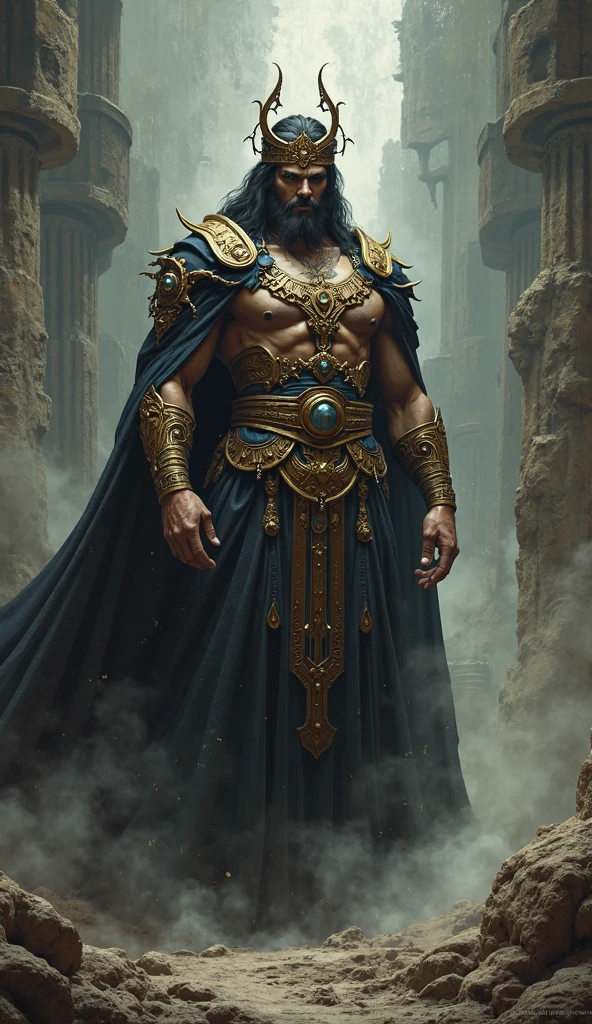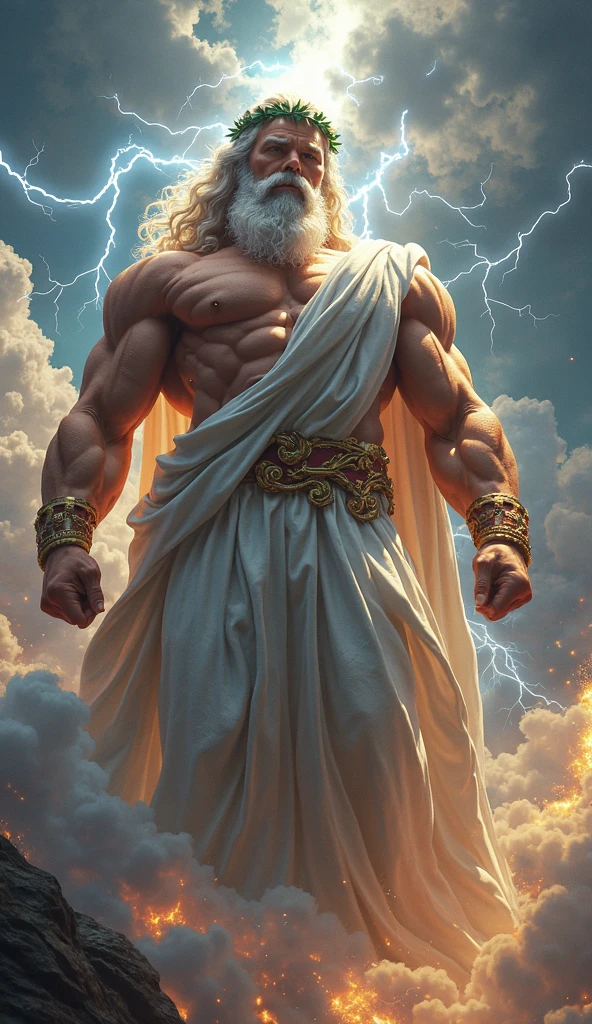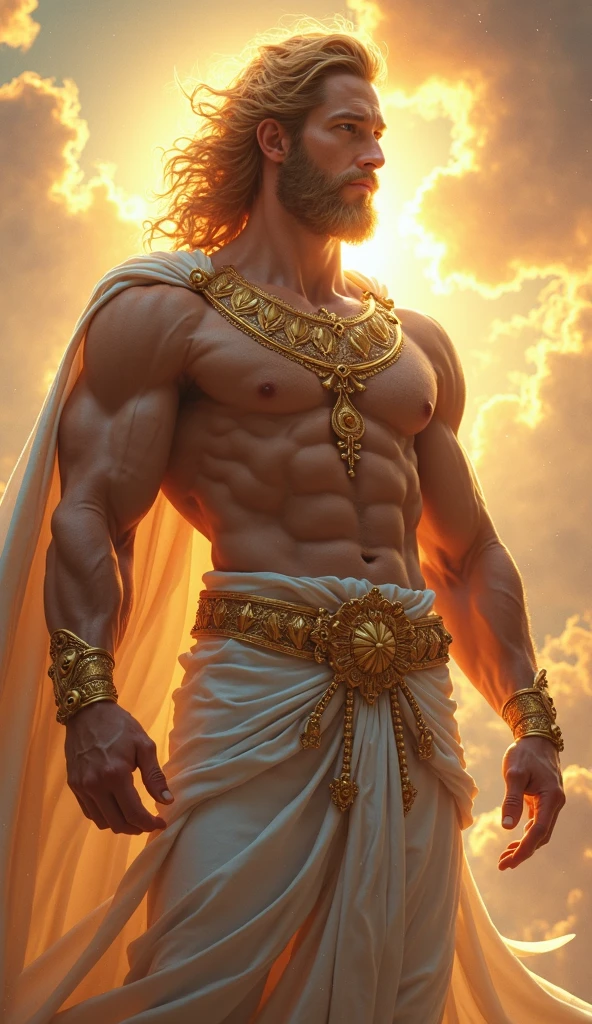Amaterasu – The Eternal Sun Goddess Who Shaped Japan’s Soul
The Divine Dawn: Birth of a Cosmic Icon
In the heart of Japanese mythology, Amaterasu blazes as the unrivalled goddess of the sun, her origin story etched into the sacred chronicles of Shinto belief. Born from the left eye of the creator god Izanagi during a ritual cleansing after his escape from the underworld, her emergence flooded the universe with light. Her siblings—Tsukuyomi, the moon deity, and Susanoo, the tempestuous storm god—joined her as the “Three Noble Children”, destined to govern the heavens, night, and oceans. From her first breath, Amaterasu’s radiance became synonymous with life itself.
Mythology Meets History: The Legacy of Light
Amaterasu’s legend is no mere folktale. Ancient texts like the Kojiki (712 CE) and Nihon Shoki (720 CE) immortalize her as the divine ancestor of Japan’s Imperial Family, weaving her into the nation’s political and spiritual DNA. Emperors ruled by her mandate, their authority sanctified through claims of direct descent from her celestial bloodline. Her full title, Amaterasu-Ōmikami (“Great Divinity Illuminating Heaven”), reflects her dual role as both a nurturing life-force and an unyielding symbol of order.
Sacred Spaces and Eternal Rituals
Amaterasu’s worship pulses through Japan’s cultural heartbeat. The Ise Grand Shrine, her primary sanctuary, stands as a marvel of Shinto architecture. Rebuilt every 20 years in an exact replica using ancient techniques, this ritual of renewal mirrors the cyclical nature of the sun itself. Within its inner sanctum lies the Yata-no-Kagami, a sacred mirror counted among the Three Imperial Regalia—a symbol of Amaterasu’s wisdom and the emperor’s divine right to rule. Pilgrims still flock here, seeking blessings from the goddess who literally lights their world.
Iconography: How Art Captures the Uncapturable
Depicting a sun goddess is no small feat. Classical artists cloaked Amaterasu in resplendent silk robes, her form haloed by sunbeams, often holding the mirror that lured her from hiding. Modern reinterpretations take creative liberties—the video game Okami reimagines her as a majestic white wolf with crimson markings, her tail painting the sky into dawn. Whether rendered in eighth-century scrolls or anime cell-shading, her imagery always radiates unapproachable majesty fused with approachable warmth.
Mythic Moments That Defined a Goddess
Amaterasu’s myths are masterclasses in storytelling. When her brother Susanoo’s chaos drove her to hide in the Ame-no-Iwato (Heavenly Rock Cave), plunging Earth into darkness, the gods devised a raucous party outside her refuge. Lured by laughter and the glow of the Yata-no-Kagami, she peeked out—and daylight returned. This tale, reenacted in Kagura dances during harvest festivals, underscores her connection to agriculture, community, and humanity’s eternal dance with darkness.
Amaterasu Today: From Shrines to Screens
Her influence didn’t stop at shrine gates. Japan’s national flag centers on a hinomaru (sun disc)—a minimalist nod to Amaterasu’s legacy. In pop culture, she’s a powerhouse: the Naruto franchise bases its Uzumaki clan symbols on her spirals, while games like Final Fantasy cast her as a summonable deity raining solar fury. Even environmental movements invoke her as a symbol of nature’s delicate balance—proof that a 1,300-year-old goddess still sparks new revolutions.
The Bonds That Illuminate: Amaterasu’s Divine Connections and Sacred Spaces
A Family Forged in Cosmic Fire
Amaterasu’s story is inseparable from the gods and mortals who orbit her like planets around the sun. As the eldest child of Izanagi, she shares her celestial throne with her siblings—Tsukuyomi, the moon god, and Susanoo, the storm deity. While her relationship with Tsukuyomi began harmoniously, their bond shattered when he killed the food goddess Uke Mochi, disgusted by her method of creating sustenance. This act forever separated day (Amaterasu) from night (Tsukuyomi), a poetic reflection of their fractured kinship.
Susanoo: Brother, Rival, Redeemed
No relationship defines Amaterasu’s myths more than her turbulent dynamic with Susanoo. Their rivalry peaked when he ravaged her rice fields and hurled a flayed horse into her sacred weaving hall. Furious, Amaterasu hid in the Ame-no-Iwato cave, plunging the world into darkness—a legendary showdown of order versus chaos. Yet their story isn’t purely adversarial. After his exile, Susanoo gifted her the Kusanagi-no-Tsurugi (Grass-Cutting Sword), one of the Three Imperial Regalia, symbolizing reconciliation and the balance between storm and sun.
Mother of Nations: The Imperial Bloodline
Amaterasu’s most enduring mortal tie is to Japan’s Imperial Family, whom she’s believed to have birthed through her grandson, Ninigi-no-Mikoto. Sent to Earth with the Regalia, Ninigi established a divine-human dynasty, linking emperors to the heavens. This mythos reached its zenith in WWII, when Emperor Hirohito famously renounced his “divine status”—yet even today, imperial rituals at the Ise Grand Shrine quietly honor this ancient lineage.
Guardian of the People: When Gods Walked Among Humans
Beyond royalty, Amaterasu’s compassion for humanity shines in folklore. Farmers prayed to her for bountiful harvests, while sailors invoked her to calm storms stirred by Susanoo. In one tale, she descended to a poverty-stricken village disguised as an elderly woman, teaching them agriculture and weaving—a divine intervention that transformed their fate. These stories cement her not as a distant deity, but as a protector deeply woven into daily life.
Where Heaven Meets Earth: Temples of Eternal Light
Amaterasu’s presence is most palpable at Japan’s sacred sites. The Ise Grand Shrine (Mie Prefecture) remains her spiritual epicenter, its inner sanctum closed to all but the emperor and high priests. Built in the Shinmei-zukuri style—simple cypress wood with raised floors—its design mirrors ancient granaries, honoring her role as harvest guardian. Every two decades, the shrine is rebuilt adjacent to its predecessor in the Shikinen Sengu ceremony, a breathtaking feat of tradition that消耗 over 10,000 cypress trees each time.
Hidden Gems: Lesser-Known Sanctuaries
While Ise shines brightest, other sites pulse with her energy:
- Amanoiwato Shrine (Takachiho): Nestled near the legendary cave where Amaterasu hid, this shrine hosts nightly Kagura dances reenacting her return.
- Hirano Shrine (Kyoto): Home to a 1,200-year-old cherry tree planted in her honor, symbolizing life’s fleeting beauty.
- Futami Okitama Shrine: Famous for its Meoto Iwa (Wedded Rocks), two sea stacks tied by sacred rope, representing Amaterasu and Susanoo’s complicated bond.
Festivals: When Mortals Dance with the Divine
Amaterasu’s festivals blend reverence with revelry. The Jingu Shikinen Sengu (Ise’s rebuilding ceremony) draws millions, while the Oharae (Great Purification) in June and December sees worshippers wave paper “human effigies” to absorb impurities—a ritual tied to her mythic cleansing of Izanagi’s Yomi pollution. In Tokyo’s Kanda Matsuri, a mikoshi (portable shrine) said to hold her mirror parades through streets, showering blessings on businesses and homes.
Why These Bonds Matter Today
Amaterasu’s relationships aren’t dusty relics—they’re blueprints for understanding Japanese values. Her forgiveness of Susanoo models conflict resolution; her kinship with farmers underscores respect for labor; her imperial ties challenge debates about tradition vs modernity. To walk her shrines or join her festivals is to touch the living heart of Japan, where gods and humans have danced together for millennia.
Amaterasu’s Arsenal: Cosmic Power and Legendary Feats That Light Up the Heavens
Solar Sovereignty: The Divine Powers of a Sun Goddess
When Amaterasu strides across the sky, the universe bends to her will. As the goddess of the sun, her powers aren’t just about daylight—they’re the heartbeat of creation itself. She commands life-giving light, capable of nurturing crops or scorching armies. In Shinto belief, her rays purify corruption, a concept celebrated in rituals where priests use mirrors to channel her cleansing energy. During the mythic Ame-no-Iwato incident, her absence didn’t just bring darkness—it froze time, proving the world literally cannot turn without her.
More Than Light: The Hidden Depths of Her Dominion
Amaterasu’s influence stretches beyond the obvious. She governs agricultural cycles, ensuring rice paddies flourish under her gaze. Warriors historically prayed to her for victory, believing her light could blind enemies or reveal hidden truths. Even modern science nods to her lore: researchers named Japan’s first solar probe Hinode (“Sunrise”) in her honor, blending myth and modernity.
Weapons of Mythic Might: Tools That Shape Realities
Amaterasu’s divine arsenal isn’t just powerful—it’s symbolic. The Three Imperial Regalia, gifted to humanity through her grandson, remain Japan’s most sacred treasures:
- Yata-no-Kagami (Eight-Span Mirror): Forged by gods to lure Amaterasu from her cave, this mirror doesn’t just reflect—it reveals cosmic truths. Enshrined at Ise, it’s considered her living embodiment.
- Kusanagi-no-Tsurugi (Grass-Cutting Sword): A blade born from Susanoo’s conquest of an eight-headed serpent, this weapon channels storms and sunlight, symbolizing reconciliation between siblings.
- Yasakani no Magatama (Grand Jewel): A curved bead necklace radiating her life force, used in imperial accession ceremonies to bless rulers with wisdom.
Lesser-Known Relics: When Legends Arm Themselves
Beyond the Regalia, myths hint at other tools. In some tales, she wields the Ame-no-Nuhoko, a jeweled spear used to solidify land from ocean chaos. Modern adaptations, like the game Okami, arm her with celestial brushes that paint storms into existence—proof her “weapons” can be as fluid as sunlight itself.
Feats That Forged Worlds: Amaterasu’s Greatest Triumphs
Amaterasu’s myths aren’t just stories—they’re foundational to Japan’s identity. When she retreated to the Ame-no-Iwato cave, her return didn’t just restore light; it redefined resilience. The gods’ laughter and dance to lure her out became the blueprint for Kagura performances, turning despair into communal celebration.
Conquering Chaos: The Susanoo Showdown
Her clash with Susanoo wasn’t just sibling rivalry—it was a cosmic reset. After his exile, Susanoo gifted her the Kusanagi sword, transforming their conflict into collaboration. This tale taught mortals that even storms (chaos) and sun (order) must coexist, a lesson etched into Japan’s approach to natural disasters and innovation.
From Myth to Modernity: Amaterasu’s Powers Reimagined
Today, her legend fuels pop culture’s wildest battles. In Naruto, the Uchiha clan’s Mangekyo Sharingan summons black flames named “Amaterasu”—a nod to her destructive potential. The game Smite casts her as a playable archer whose arrows explode into sunlight, while anime like Noragami reimagines her as a tech-savvy deity manipulating digital networks. Even Marvel Comics’ Amaterasu (from X-Men) wields photokinesis, proving her powers transcend cultural borders.
Why Her Feats Still Matter
Amaterasu’s stories aren’t relics—they’re survival guides. Her cave myth teaches that joy can end even the darkest times. Her control over nature reminds us to respect ecological balance. And her weapons, blending war and diplomacy, inspire modern leaders to wield power with wisdom. She’s not just a goddess; she’s the ultimate strategist, balancing fury and compassion like sunlight filtering through storm clouds.
Amaterasu vs. The Multiverse: 10 Epic Battles Against Anime and Comic Legends
When the Sun Goddess Steps into the Ring
Imagine Amaterasu, radiant and unyielding, facing off against the most iconic powerhouses from anime and comics. Her mastery over light, creation, and cosmic balance makes her a formidable opponent—but how does she stack up against universe-bending titans? Let’s dive into hypothetical showdowns that would make even the gods lean in to watch.
1. Sailor Moon (Usagi Tsukino) – The Moon Princess vs. The Sun Sovereign
Amaterasu’s Edge: While Sailor Moon wields the Silver Crystal to heal and transform, Amaterasu’s control over solar thermodynamics could overload Usagi’s lunar-based magic. The sun goddess’s immortality outlasts Sailor Moon’s temporary planetary transformations.
Who Wins?: Amaterasu, but barely. Sailor Moon’s resilience and teamwork might prolong the fight, but raw cosmic endurance tips the scales.
2. Superman (Kal-El) – Solar Battery vs. Solar Goddess
Amaterasu’s Edge: Superman draws power from Earth’s yellow sun—but Amaterasu is the sun. She could theoretically cut off his energy source or flood him with radiation beyond his absorption limits.
Who Wins?: Amaterasu. Without kryptonite, Superman’s greatest weakness here is his dependency on the very force she commands.
3. Saitama (One Punch Man) – Infinite Strength vs. Infinite Light
Amaterasu’s Edge: Saitama’s punches can obliterate planets, but Amaterasu exists as both a physical entity and a cosmic concept. Unless he can punch sunlight itself, she’d reform after each strike.
Who Wins?: Stalemate. Saitama can’t kill a goddess tied to existence itself, but Amaterasu lacks the brute force to KO him.
4. Jean Grey (Phoenix Force) – Cosmic Fire vs. Divine Light
Amaterasu’s Edge: The Phoenix Force thrives on chaos and rebirth, while Amaterasu embodies orderly creation. Her sacred mirror could reflect Phoenix’s psychic flames, forcing Jean into a cycle of self-destruction.
Who Wins?: Phoenix-Jean, but at a cost. The Phoenix’s raw power overwhelms, but Amaterasu’s purification might fracture their fusion.
5. Madara Uchiha (Naruto) – Amaterasu’s Flames vs. Their Creator
Amaterasu’s Edge: Madara’s Mangekyo Sharingan uses black flames named after her, but the goddess could absorb or redirect them. His Susanoo armor falters against her truth-revealing mirror.
Who Wins?: Amaterasu. You don’t steal a goddess’s name and win.
6. Escanor (Seven Deadly Sins) – The Lion’s Noon vs. Eternal Dawn
Amaterasu’s Edge: Escanor peaks at midday, but Amaterasu controls the sun’s movement. By freezing time at 11:59 AM, she negates his power surge.
Who Wins?: Amaterasu. Escanor’s mortal body can’t withstand indefinite solar exposure.
7. Thor (Marvel) – God of Thunder vs. Goddess of Light
Amaterasu’s Edge: Mjolnir channels storms, but Amaterasu’s Kusanagi sword (a storm relic) could hijack its lightning. Her light also outshines Thor’s Asgardian durability.
Who Wins?: Amaterasu. Even Odin would nod in respect.
8. Aang (Avatar: The Last Airbender) – Elemental Master vs. Creation Itself
Amaterasu’s Edge: Aang’s avatar state taps into cosmic energy, but Amaterasu is the source of one of his elements (fire). She could sever his bending connection.
Who Wins?: Amaterasu. Sorry, Twinkle Toes.
9. Dormammu (Marvel) – Dark Dimension vs. Solar Purification
Amaterasu’s Edge: Dormammu thrives in darkness, but Amaterasu’s light rewrites realities. Her mirror could trap him in an endless day, burning his chaotic essence.
Who Wins?: Amaterasu. Even eternity gets sunburned.
10. Goku (Dragon Ball) – Ultra Instinct vs. Divine Strategy
Amaterasu’s Edge: Goku’s physical speed rivals gods, but Amaterasu’s non-linear perception of time (as a sun) lets her anticipate every move. Her regenerative abilities outlast his stamina.
Who Wins?: Goku, but only with a Spirit Bomb charged by her own energy—a poetic draw.
Why These Battles Define Amaterasu’s Legacy
These matchups aren’t just fan fiction—they reveal why Amaterasu endures. She isn’t just a deity; she’s a narrative force balancing creation and destruction. Whether facing superheroes or shonen icons, her victories hinge on wisdom over brute strength, proving that even in battle, light can outmaneuver shadow.



